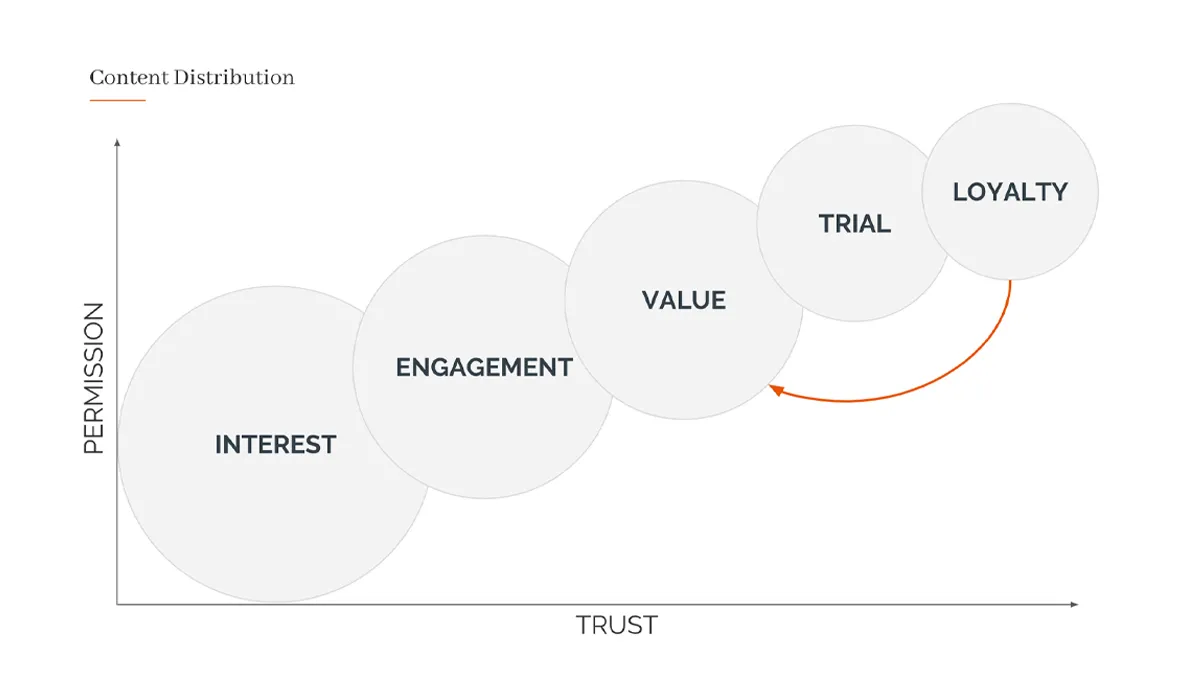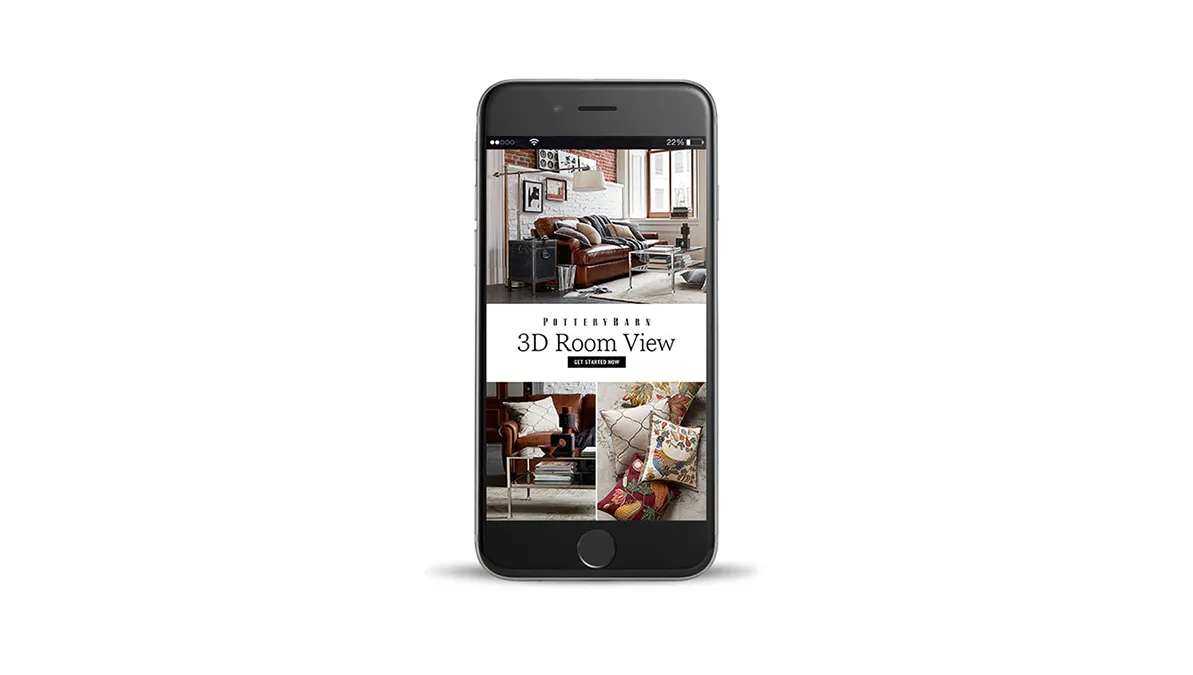Adapting your marketing approach to a constantly changing world
How can we continue to break through the clutter of our media landscape? This question plagues marketers across the globe and, quite frankly, gets us stoked about our jobs, every single day. Here, we are going to share some 2019 marketing trends that will change the way you think about your target consumers, their path to purchase, and how to make your brand resonate.
The evolution of the consumer journey
In 2011, Seth Godin, a leader in marketing, introduced us to a fundamental shift in how we should approach our work. He eloquently explained that methods of the past that interrupted consumers from whatever they were doing were no longer working. We needed to think about marketing like dating: as people become more familiar with brands or products, they subconsciously or consciously give the brand permission to engage with them more and more.
In our fast-paced, always-on culture, we’re seeing another shift in this model. We’re moving away from the concept of just needing to be familiar with a brand to give it more permission to engage. People are starting to ask questions, like ‘do we trust this brand and what they are telling us?’
Think about it, the average consumer sees over 5,000 ads per day. So, while putting your brand in front of people over and over may cause them to remember that you exist, it won’t make a connection that motivates them to invest time or money in your brand.
In the past, getting your brand in front of as many people as possible was the best way to gain familiarity with consumers. This familiarity-based approach allowed brands to have more permission to go deeper with their consumers.
Today, you need to pique the interest of your target audience for them to notice you. You need to get people to interact with your brand immediately. It’s the best way to know that you have their attention and might be gaining their trust. Trust builds when you actively become a partner to your target outdoor consumers and provide them with value (relevant and useful information).
The notion is that, eventually, this leads to a purchase, but the communication doesn’t stop there. People want to build real relationships. They want to be stimulated by your brand beyond just your product offerings. They want to know that you’re there to help them every step of the way and that you’re a partner, not a vendor. This creates brand loyalty, repeat purchase, and brand advocacy.
Time to pay attention to Generation Z
Gen Z will account for 40% of consumers by 2020 and is quite a different type of consumer than a Millennial. As you begin to develop next year’s marketing strategies. it’s important to learn about what makes them tick.
Generation Z can’t remember a world without the internet and social media. They are the most connected, educated and sophisticated generation ever. To Gen Z there is no difference between online and offline. The two are unconditionally intertwined with each other. On average they use their smartphones 15.4 hours per week. This is more than any other type of device, so make sure to have a mobile-focused marketing plan, especially on social media channels like Instagram, Snapchat and YouTube.
Because Gen Z grew up in a fast-paced, always-on culture dominated by mobile and video streaming we’re seeing their attention spans shorten even more than Millennials. So, when marketing to Gen Z, remember to continually refresh messages and techniques in order to keep them captivated. If your video or website doesn’t load quickly, then Gen Zers have already moved on to something else.
Mobile-commerce is a must with Gen Z. By 2021 m-commerce is expected to account for 54% of total e-commerce sales. M-commerce provides a better overall experience for consumers. It allows consumers to shop whenever and wherever they want. Some brands, like Pottery Barn, are using augmented reality as a way to complement their mobile shopping experience. Chatbots and messenger apps are also ways brands can interact with consumers on mobile and move them closer to purchase.
One-third of Gen Z watches video online for at least one hour per day, with YouTube being their go-to platform. But Gen Z is not the only audience who consume video. In 2019, video will make up 80% of all internet traffic. We are seeing a rise in consumption with spontaneous live videos versus pre-recorded videos. More and more users are consuming social media horizontally versus vertically.
If the average consumer sees around 5,000 ads per day, Gen Zers see about 10,000! Again, we’re faced with the question of how to break through the clutter and capture their attention? The answer lies with experience and interaction. Story-living versus storytelling. Brands need to provide value-driven experiences that showcase their narrative and engage Gen Zers at the same time. Story-living goes beyond your brand story and actually puts it into the customer experience.
Improving the customer experience (CX)
Paying close attention to customer experience allows you to build trust with your target consumers, increase your customer satisfaction rates and increase revenue from customer loyalty and repeat purchase. So, how can you improve your CX?
Here are a few tips to get you started:
- Outline your employee brand
- If your employees are delivering your brand through every interaction, the CX will be consistent and impactful.
- Map out your consumer touchpoints
- Having a clear understanding of your consumer’s journey will enable you to develop strategies around consumer touchpoints that need improvement
- Create an emotional connection with your consumers
- Customer loyalty develops when they remember how they felt through a consumer interaction.
- Gather customer feedback in real-time….apply and adapt
- Consumers want to participate in your brand. They want to interact, be heard and have a say in the future
It is important to let consumers come away with the feeling that they bettered themselves and others through the experience. If you can accomplish this then you’re well on your way to building trust.
Merging creativity and data
The last theme we want to address is the idea of focussing on creativity. When we talk about ‘creativity’ we are not just talking about the cinematography of a video or design of your blog. Yes, those things are important, but what we are talking about is the ability to solve problems in a new way.
Data is a big contributor to marketing strategies. It allows you to gain a deeper understanding of your target audience. How they think, how they shop, what motivates them, how they consume media and ultimately what they really care about. But what is data without creativity? Once we have the data, we need to apply it in a way that will pique interest, drive engagement, bring value and eventually lead to a purchase.
This starts by gaining a unified view of the consumer with data from multiple sources. A long-standing problem for marketers has been that data can be fragmented because it comes from numerous platforms and tools, across different business units and regions.
Artificial Intelligence (AI) technology is proving to be a solution to the problem of fragmented data. AI solutions take consumer profiles to the next level, so you can refine your marketing campaign and create the personalization consumers are looking for. AI also allows you to converse with your consumers in real-time, identify trends or patterns in their conversations, and chime in at the crucial buying moment.
Stories build trust
With consumers looking to make an emotional connection with your brand. What better way to do that than through first-person storytelling? The more human we can make our brands and our marketing efforts, the stronger and deeper the connection we can make with our target audience. Storytelling creates a sense of authenticity and intimacy, and helps people build a relationship with your brand.
All of the trends discussed above lead back to one focal point; the consumer journey has shifted to trust building. The better relationships brands can develop with consumers leads to that brand being viewed as a partner, not just a vendor. This redefined relationship starts by garnering a deep understanding of the consumer so you can pique their interest and bring them into your brand experience.
Think creatively on how you can use data to capture people’s attention and improve the CX. Your CX will be the sure way to enhance trust building and foster a lasting relationship with your consumers.
Let MMGY Origin Help!
MMGY Origin can help your outdoor industry adapt to the ever-changing tourism market.
Contact us to speak with one of our outdoor industry experts. We also encourage you to subscribe to our monthly newsletter, “Insights on The Outdoors” found here at https://www.originoutside.com/newsletter








